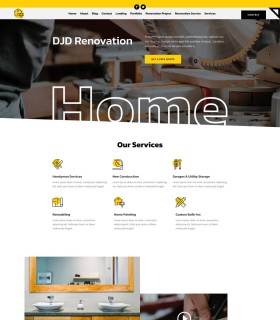Designing Exceptional Experiences: Key UX/UI Design Principles for Success
In today's digital world, the success of any product or website hinges on its user experience (UX) and user interface (UI) design. Users have come to expect seamless, intuitive interactions with digital products. To meet these expectations and stand out in a competitive landscape, designers must adhere to fundamental UX/UI design principles. This article delves into these principles, providing a roadmap to crafting outstanding user experiences and interfaces.
1. User-Centered Design
Put the user at the center of your design process. Understand their needs, goals, and pain points through user research and feedback. Design with empathy to create solutions that resonate with your audience.
2. Usability
Prioritize usability in your designs. Ensure that users can navigate your product effortlessly. Conduct usability testing to identify and eliminate any barriers or friction points in the user journey.
3. Accessibility
Design inclusively. Make your digital products accessible to everyone, including individuals with disabilities. Comply with accessibility standards (e.g., WCAG) to ensure that all users can interact with your designs.
4. Responsive Design
In a multi-device world, ensure your designs are responsive. They should adapt seamlessly to various screen sizes and resolutions, providing a consistent experience across devices.
5. Visual Hierarchy
Guide users through your interface with a well-defined visual hierarchy. Use elements like size, color, and typography to emphasize important content and actions, helping users understand the information flow intuitively.
6. Interaction Design
Craft intuitive interactions. Pay attention to how users interact with your interface elements, from buttons to forms. Provide feedback, clear calls to action, and logical pathways to enhance the user experience.
7. Consistency
Maintain consistency in your design elements, such as colors, typography, and iconography. A consistent interface fosters familiarity and ease of use.
8. Simplicity
Embrace the principle of simplicity. Eliminate unnecessary clutter and complexity from your designs. Strive for elegance and clarity in every aspect of the user experience.
9. Feedback and Iteration
Design is an iterative process. Collect user feedback and continually refine your designs based on real-world usage. Regularly update and improve your interface to stay aligned with user needs and preferences.
10. Storytelling through Design
Use design elements to tell a compelling story. Create a narrative that guides users through their journey and conveys your brand's message effectively.
Conclusion
Mastering UX/UI design principles is essential for creating digital products and interfaces that not only meet user expectations but also exceed them. By adhering to user-centered design, prioritizing usability and accessibility, embracing responsiveness, establishing visual hierarchy, crafting intuitive interactions, maintaining consistency, simplifying complexity, and engaging users through storytelling, you can design exceptional experiences that captivate and engage your audience. Remember that UX/UI design is an ongoing journey of refinement and adaptation. Stay attuned to evolving user needs and technological advancements, and you'll continue to deliver outstanding digital experiences that drive success in the modern digital landscape.















